4A0-C02 Nokia SRA Composite Exam Free Practice Exam Questions (2025 Updated)
Prepare effectively for your Nokia 4A0-C02 Nokia SRA Composite Exam certification with our extensive collection of free, high-quality practice questions. Each question is designed to mirror the actual exam format and objectives, complete with comprehensive answers and detailed explanations. Our materials are regularly updated for 2025, ensuring you have the most current resources to build confidence and succeed on your first attempt.
Which of the following statements BEST defines policing?
Packets arrive at the VPRN SAP on PE1 with DSCP marking of all. According to the QoS policies applied at routers PE1, P, and PE2, what is the DSCP value of packets egressing router PE2? (All the SDPs are MPLS-encapsulated, and all interfaces are using their default trust states).
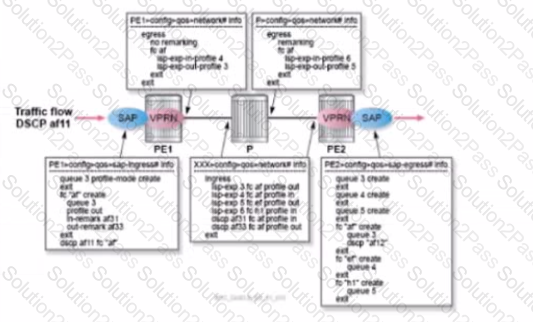
Which of the following statements about LAGs is TRUE?
Which of the following fields can be marked or remarked for frames belonging to a Layer 2 service?
With hierarchical scheduling, up to ___________ tiers are supported on the Alcatel-Lucent 7750 SR.
Given the scheduler-policy parameters shown, and assuming the offered rate of each queue is 10 Mbps, what are the operational PIR and CIR for queue 1?
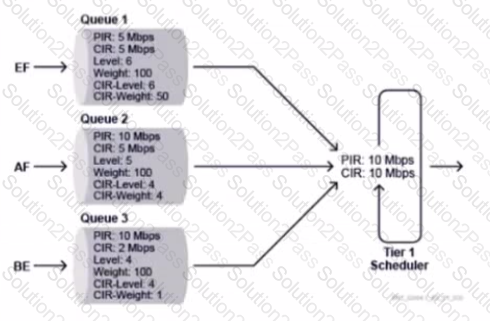
According to the SAP-ingress QoS policy shown, which packets have a higher priority to enter queue 6?

What is the purpose of the Nokia SR design that includes, for every ingress unicast queue, one hardware queue per destination forwarding complex (FFPC)?
Based upon the exhibit, which of the following statements about LAG 1 is TRUE?
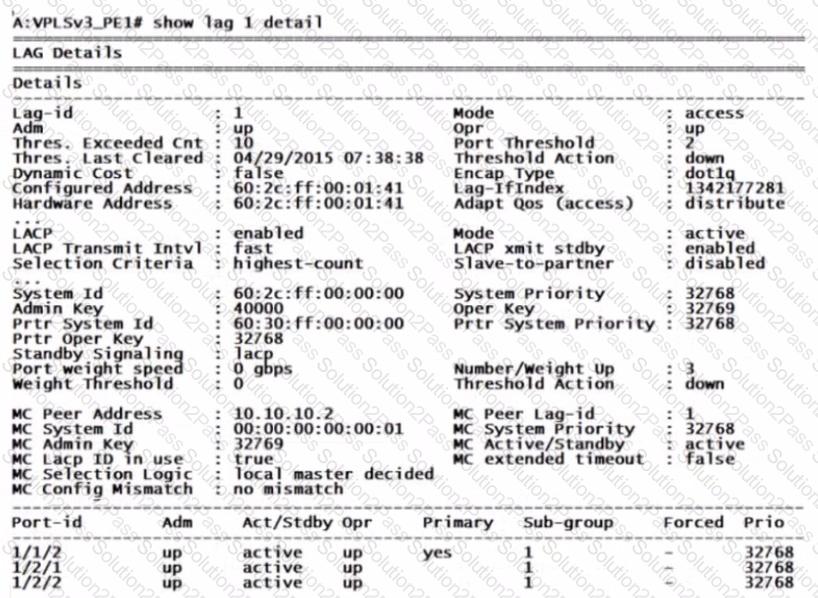
Which of the following protocols are used for service label signaling?
Click the exhibit button below. Given that the slope-policy (below) has been enabled and applied on a network port, which of the following statements are TRUE? (Choose three)

Click the exhibit button below. A partial SAP-ingress policy configuration is shown below. A UDP video stream is sent to a PC with IP address 192.168.1.100. Given the SAP-ingress policy, to which forwarding class is the traffic matched?
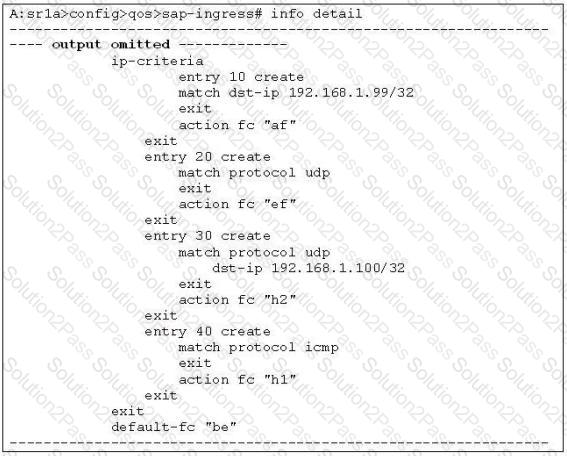
Which of the following are possible criteria for classifying packets at the network port ingress on the Alcatel-Lucent 7750 SR? (Choose three)
At which points can traffic be marked or remarked on the Alcatel-Lucent 7750? (Choose two)
Which of the following statements are TRUE? (Choose two)
When allocating scheduling resources, which of the following statements BEST describes how the egress port scheduler allocates bandwidth?
Click the exhibit button below.
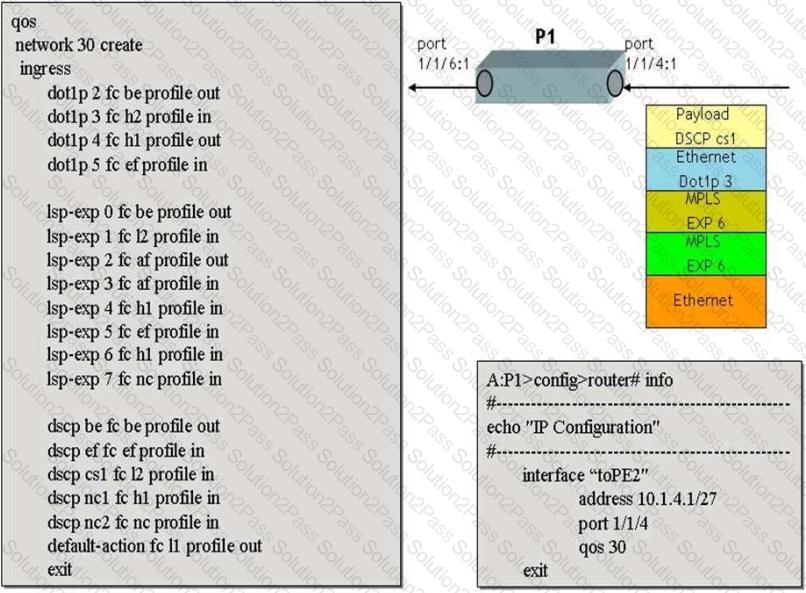
Based on the configuration of the network policy (below), what will be the forwarding class associated with a MPLS encapsulated customer packet that arrives on a dotlQ encapsulated network port 1/1/4:1 on P1 with the following characteristics:
EXP value = 6
DSCP value = cs1
Dot1pvalue = 3
Click the exhibit button below. Given the scheduler-policy (below), which of the following can be done to guarantee that the best-effort traffic receives its configured CIR value?

In the image shown above, the network QoS policy is applied properly to a Nokia 77S0 SR acting as a transit Label Switch Router (LSR) for a given MPLS tunnel. A packet is received inside the MPLS tunnel with EXP=5, dotlp=0, and DSCP=EF. Which forwarding class is assigned to this packet?
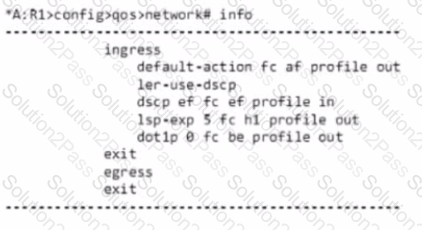
Which of the following statements regarding buffer pool allocation are FALSE? (Choose two)
Click the exhibit button below. The service provider has both a VLL (epipe) service and a VPLS, as shown in the diagram below.

At router PE B, traffic arriving from both services will have the same network-queue policy applied.
The FOB of the VPLS service shown below is empty. An Ethernet frame arrives from the customer on the SAP. Which of the following describes the action taken?
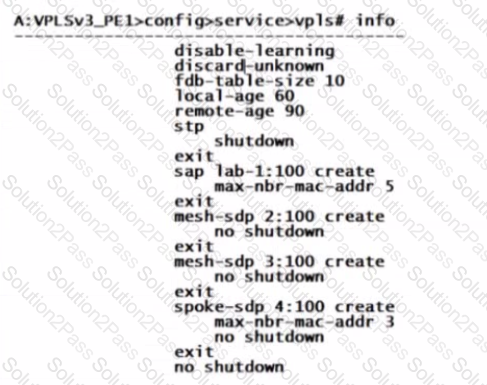
If a packet is marked on a SAP-ingress, it will be remarked at the first network egress point (if remarking is enabled in the network egress policy).
Which of the following entities can scheduler policies be applied to? (Choose two)
On the Alcatel-Lucent 7750 SR, how many queues per FC are available for multipoint traffic within a VPLS on service ingress?
Based on queue usage, which of the following QoS-policies when combined will allow queue rates to be dynamically allocated? (Choose two)
In which of the following scenarios is the egress port scheduler useful? (Choose two)
Which of the following statements regarding DSCP bits are TRUE? (Choose three)
According to the SAP-egress policy configured and applied, which queue will EF traffic use?
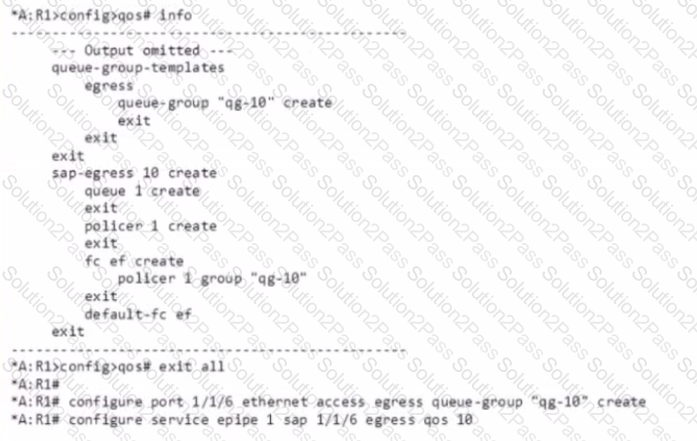
Which of the following are the minimum requirements needed to classify traffic marked with DSCP AF11, AF12, and AF13 into the AF forwarding class and provide fair treatment to the drop precedence settings? (Choose three)
